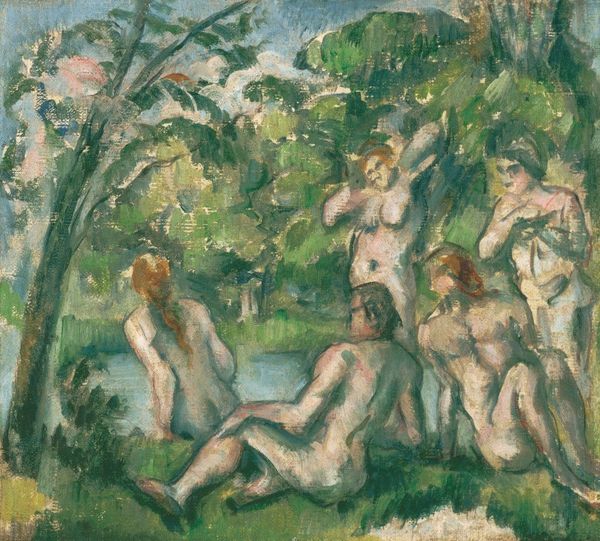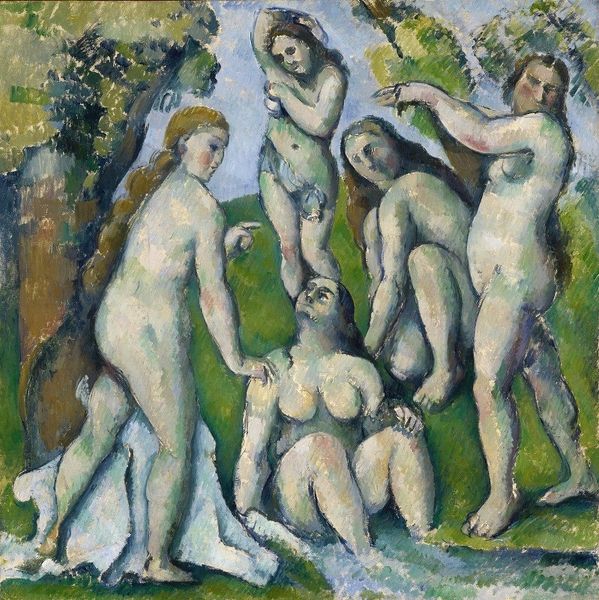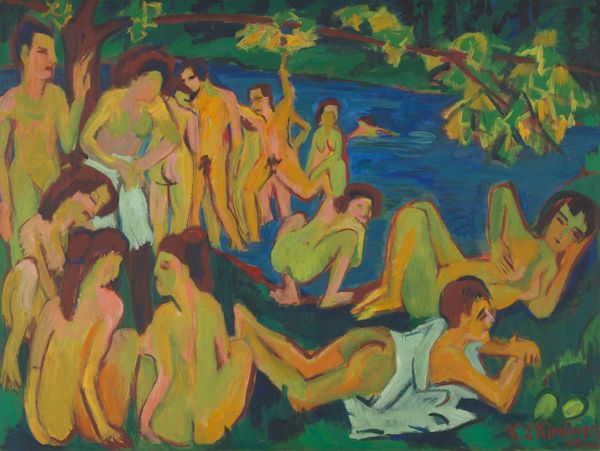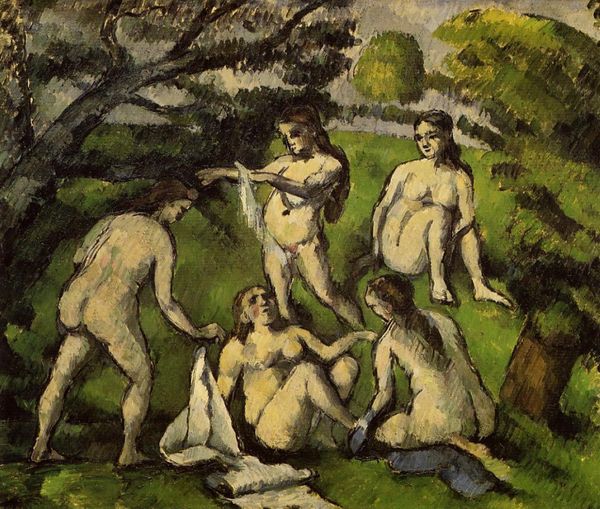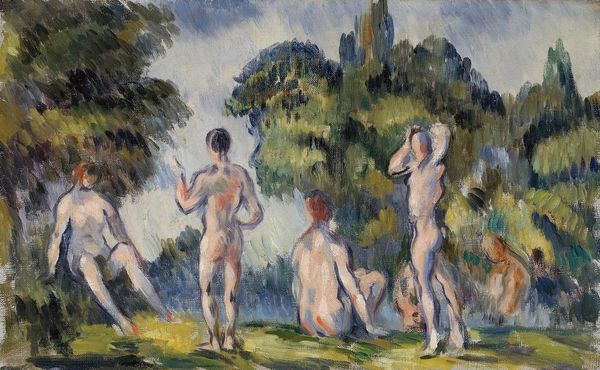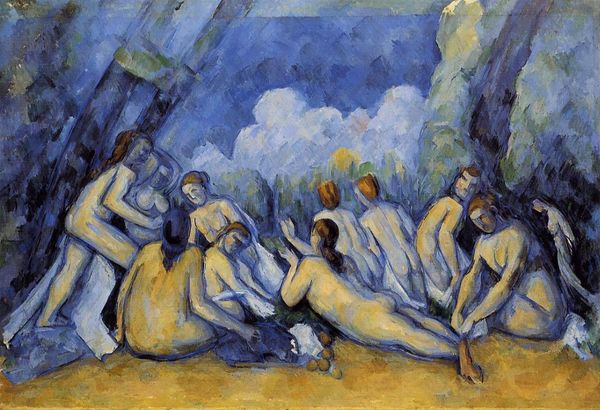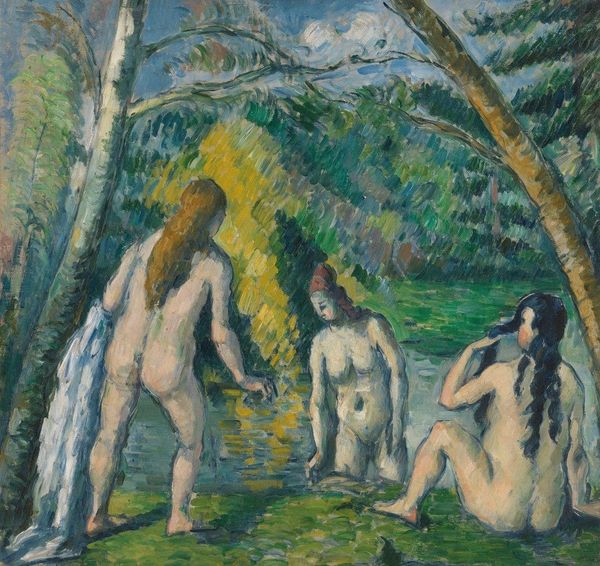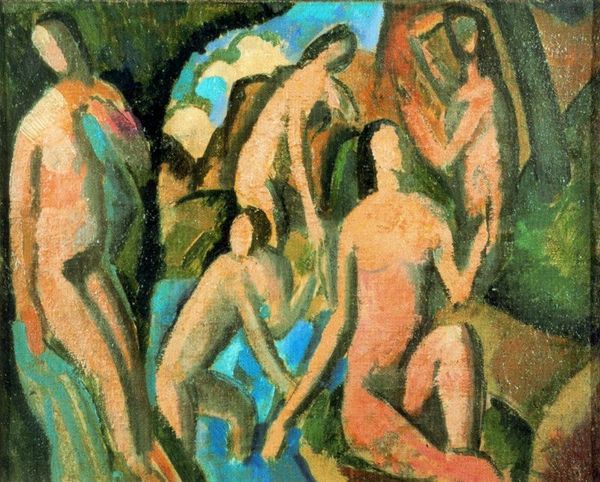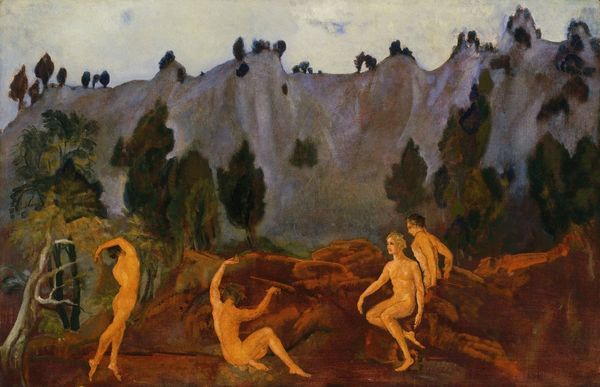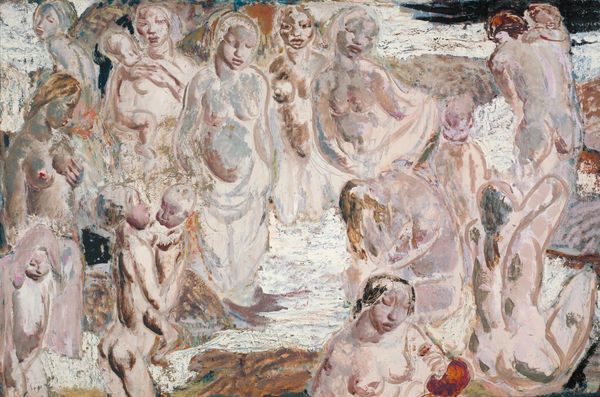
painting, oil-paint
#
figurative
#
painting
#
oil-paint
#
landscape
#
figuration
#
form
#
oil painting
#
group-portraits
#
post-impressionism
#
nude
Copyright: Public Domain: Artvee
Curator: Here we have Paul Cézanne’s "The Large Bathers," a truly monumental work even if the exact date of its creation remains a topic of discussion amongst scholars. Editor: My first impression is how solid they feel, monumental indeed, as if he’s constructed them from the earth itself with each figure having this weighty presence. Curator: And that's exactly what Cézanne was after— a new form of realism that he described as durable. He moved away from impressionistic ideals to look at shape, volume, and depth to build up form through layers of color. Editor: I see what you mean, and notice that almost tactile feel with the layers of paint in how the nude bodies contrast against that more loosely rendered landscape with visible brushstrokes. Curator: Precisely. And this piece, along with others in his 'Bathers' series, really challenged the established Salon conventions. This pushed figuration toward abstraction and abstraction toward representation which greatly influenced later avant-garde movements like Cubism and Fauvism. He was disrupting art's expected norms and values. Editor: Considering the constraints imposed by academic expectations on representations of the body during that era, focusing so heavily on its material form could almost be seen as subversive. This reminds us how even idyllic or pastoral paintings become arenas of cultural negotiation when labor and production methods take the fore. Curator: A really key observation because the art market favored these polished, finished pieces, yet Cezanne leaves the traces of his process visible. That disrupted traditional notions of artistic skill, pushing against elitist standards that deemed art 'high' or 'low.' Editor: Indeed. These works aren’t merely paintings; they’re manifestations of process that are integral to experiencing them. Each impasto brushstroke testifies to human endeavor. Curator: Thinking of the broader cultural moment, 'The Large Bathers' prompts fascinating inquiries into how artistic expression and broader social forces interact, providing a view of the evolution in how paintings were consumed and critiqued. Editor: Yes, from a material perspective, seeing how brushstrokes translate to the building blocks gives us more insight into our artistic process as a society during Cézanne's life. Curator: Exactly! I think understanding his legacy reminds us that art is not produced in a vacuum and neither is art’s consumption. Editor: And this detailed discussion reaffirms how even within single works the multiple possibilities emerge given where we place focus be it socio-cultural elements or an appreciation rooted strictly through making practices and processes.
Comments
No comments
Be the first to comment and join the conversation on the ultimate creative platform.
